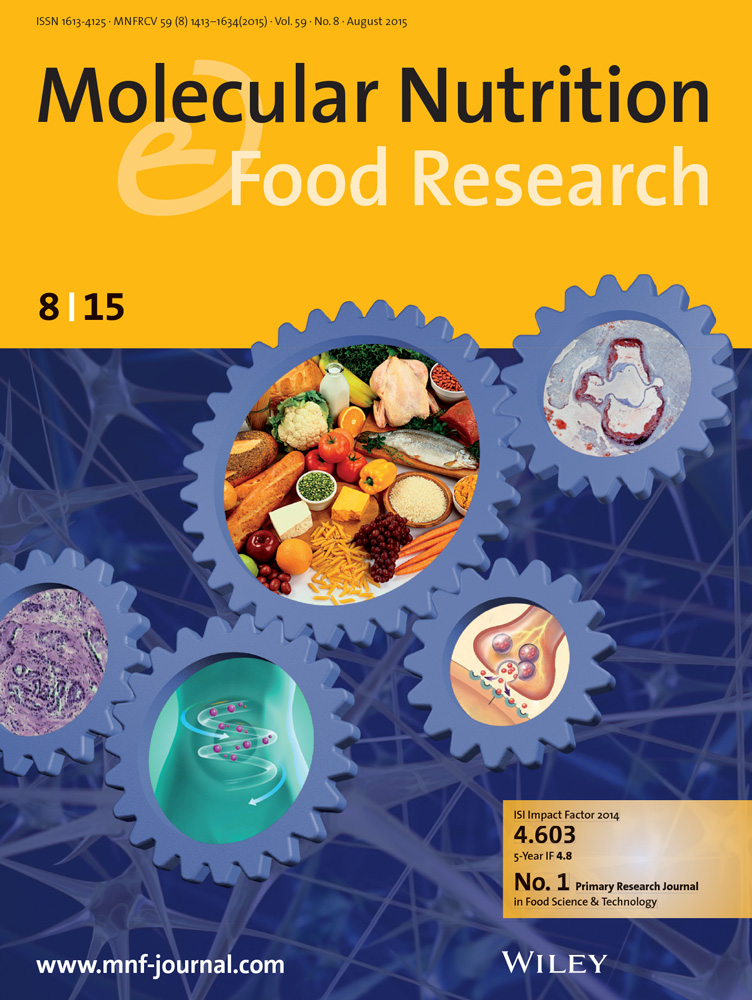Chronic Alcohol Exposure Modulates Atherosclerotic Plaque Vulnerability in ApoE Knockout Mice
IF 4.5
2区 农林科学
Q1 FOOD SCIENCE & TECHNOLOGY
引用次数: 0
Abstract
Aim: This study aimed to examine the effect of chronic alcohol consumption on the development and progression of atherosclerosis in apolipoprotein E-knockout (ApoE−/−) mice. Method: Male ApoE−/− mice, aged 8 weeks, were randomly assigned to four groups: control, model, low-dose alcohol, and high-dose alcohol. The mice were fed a normal chow or high-fat diet for 14 weeks, with water provided alongside 1% (v/v) or 5% (v/v) alcohol solutions. Results: Mice in the 1% (v/v) alcohol group showed a significant increase in subcutaneous and epididymal fat compared to those in the model group. However, basal metabolic markers remained unchanged in the 5% (v/v) alcohol group, although water intake was significantly lower. Histological analyses of the experimental groups exposed to alcohol revealed no protective effects against atherosclerosis in the aortic tree or plaque deposition in the aortic root. Additionally, no significant changes were observed in the macrophages and smooth muscle cells within the aortic root plaques. Nevertheless, low-dose alcohol exposure protected plaque vulnerability compared with the model group, whereas high-dose alcohol had no effect. Transcriptomic analysis of aortic tissue further indicated that alcohol consumption reduced the expression of genes related to lipid transport and metabolic abnormalities.

慢性酒精暴露调节ApoE敲除小鼠动脉粥样硬化斑块易感性
目的:本研究旨在研究慢性饮酒对载脂蛋白e敲除(ApoE−/−)小鼠动脉粥样硬化发生和进展的影响。方法:8周龄雄性ApoE - / -小鼠随机分为4组:对照组、模型组、低剂量酒精组和高剂量酒精组。小鼠被喂食正常食物或高脂肪饮食14周,并提供水和1% (v/v)或5% (v/v)酒精溶液。结果:与模型组相比,1% (v/v)酒精组小鼠皮下和附睾脂肪明显增加。然而,5% (v/v)酒精组的基础代谢指标保持不变,尽管水摄入量显著降低。暴露于酒精的实验组的组织学分析显示,对主动脉树动脉粥样硬化或主动脉根部斑块沉积没有保护作用。此外,主动脉根部斑块内的巨噬细胞和平滑肌细胞未见明显变化。然而,与模型组相比,低剂量酒精暴露可以保护斑块易损性,而高剂量酒精没有影响。主动脉组织的转录组学分析进一步表明,饮酒减少了与脂质转运和代谢异常相关的基因的表达。
本文章由计算机程序翻译,如有差异,请以英文原文为准。
求助全文
约1分钟内获得全文
求助全文
来源期刊

Molecular Nutrition & Food Research
工程技术-食品科技
CiteScore
8.70
自引率
1.90%
发文量
250
审稿时长
1.7 months
期刊介绍:
Molecular Nutrition & Food Research is a primary research journal devoted to health, safety and all aspects of molecular nutrition such as nutritional biochemistry, nutrigenomics and metabolomics aiming to link the information arising from related disciplines:
Bioactivity: Nutritional and medical effects of food constituents including bioavailability and kinetics.
Immunology: Understanding the interactions of food and the immune system.
Microbiology: Food spoilage, food pathogens, chemical and physical approaches of fermented foods and novel microbial processes.
Chemistry: Isolation and analysis of bioactive food ingredients while considering environmental aspects.
 求助内容:
求助内容: 应助结果提醒方式:
应助结果提醒方式:


